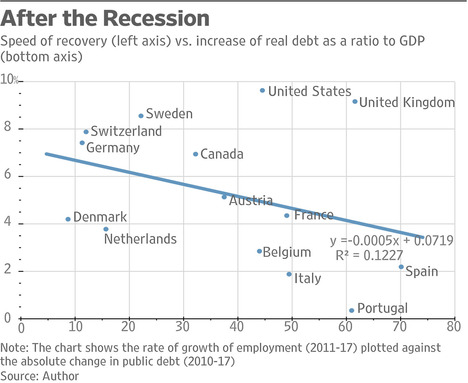(p. A17) As the economist Joseph Schumpeter observed: “The capitalist process, not by coincidence but by virtue of its mechanism, progressively raises the standard of life of the masses.”
For Schumpeter, entrepreneurs and the companies they found are the engines of wealth creation. This is what distinguishes capitalism from all previous forms of economic society and turned Marxism on its head, the parasitic capitalist becoming the innovative and beneficent entrepreneur. Since the 2008 crash, Schumpeter’s lessons have been overshadowed by Keynesian macroeconomics, in which the entrepreneurial function is reduced to a ghostly presence. As Schumpeter commented on John Maynard Keynes’s “General Theory” (1936), change–the outstanding feature of capitalism–was, in Keynes’s analysis, “assumed away.”
Progressive, ameliorative change is what poor people in poor countries need most of all. In “The Prosperity Paradox: How Innovation Can Lift Nations Out of Poverty,” Harvard Business School’s Clayton Christensen and co-authors Efosa Ojomo and Karen Dillon return the entrepreneur and innovation to the center stage of economic development and prosperity. The authors overturn the current foreign-aid development paradigm of externally imposed, predominantly government funded capital- and institution-building programs and replace it with a model of entrepreneur-led innovation. “It may sound counterintuitive,” the authors write, but “enduring prosperity for many countries will not come from fixing poverty. It will come from investing in innovations that create new markets within these countries.” This is the paradox of the book’s title.
. . .
One example that the authors cite is Tolaram Group, a Singapore-based conglomerate that created the instant-noodle market in Nigeria, pushing out 4.5 billion packets annually and generating revenue of almost $1 billion a year. Sourcing, manufacturing, distributing and selling its Indomie-branded noodles required that Tolaram invest in a broad and deep logistics and distribution chain; create a retail network; develop specialized training; acquire its own electricity generation; build a water and sewage-treatment plant; and construct a deep-water port in the city of Lekki. Had Tolaram waited for the Nigerian government to address these infrastructure and institutional challenges before investing in the country, the company would still be waiting. Other examples include British businessman Mo Ibrahim’s pan-African Celtel, which built a cellphone network across 13 African countries and gained 5.2 million customers in six years, and India’s Narayana Health, which has brought the cost of open-heart surgery down to $1,000.
. . .
Instead of a book of glib answers, they present something much more powerful–a work of creative destruction for today’s failed development-policy paradigm.
For the full review, see:
Rupert Darwall. “BOOKSHELF; A Better Way to Fight Poverty; The current foreign-development paradigm of government-funded programs should be replaced by an entrepreneurial model.” The Wall Street Journal (Thursday, January 31, 2019): A17.
(Note: ellipses added.)
(Note: the online version of the review has the date Jan. 30, 2019, and has the title “BOOKSHELF; ‘The Prosperity Paradox’ Review: A Better Way to Fight Poverty; The current foreign-development paradigm of government-funded programs should be replaced by an entrepreneurial model.”)
The book under review, is:
Christensen, Clayton M., Efosa Ojomo, and Karen Dillon. The Prosperity Paradox: How Innovation Can Lift Nations Out of Poverty. New York: HarperBusiness Press, 2019.

